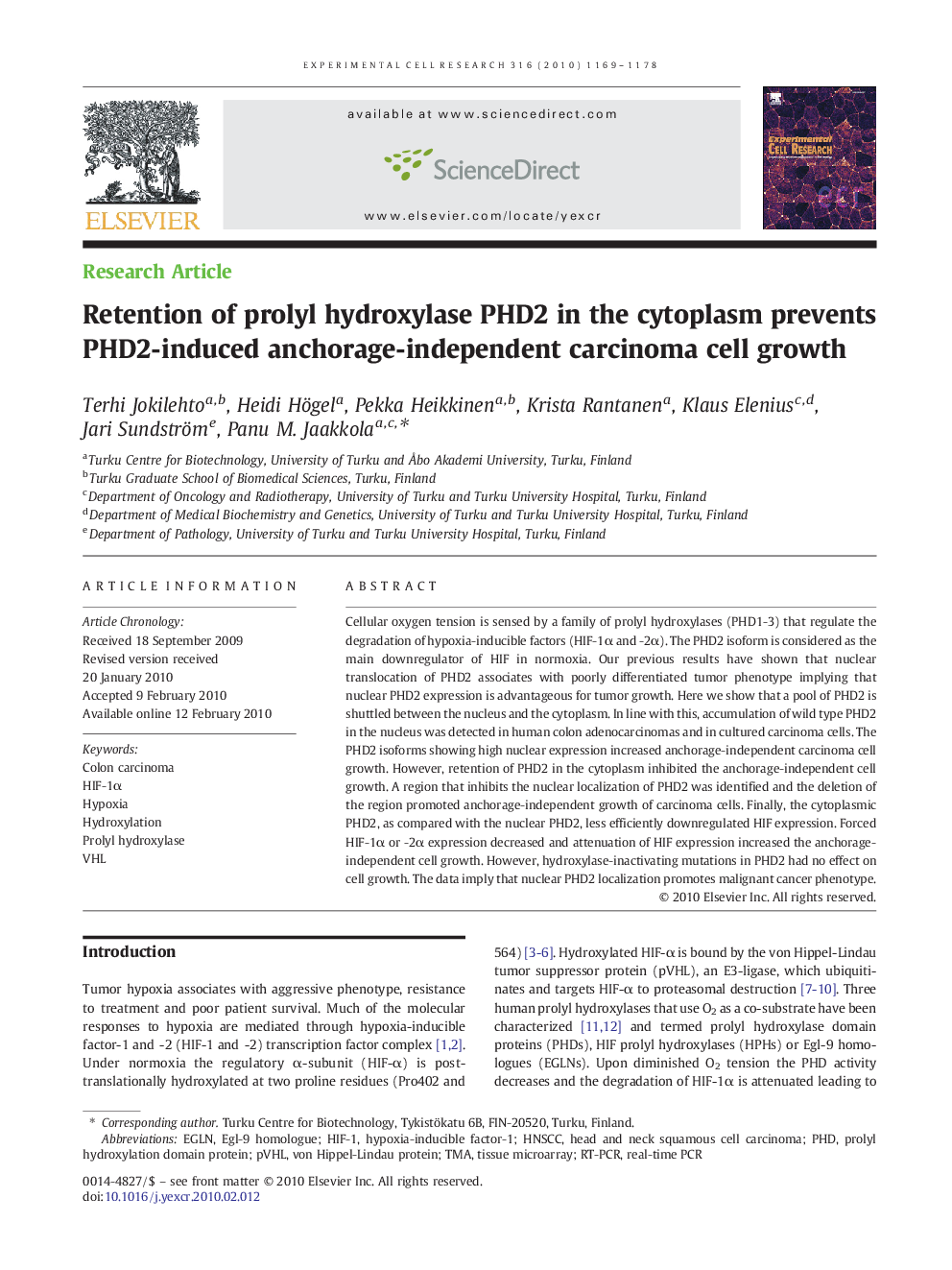| Article ID | Journal | Published Year | Pages | File Type |
|---|---|---|---|---|
| 10904584 | Experimental Cell Research | 2010 | 10 Pages |
Abstract
Cellular oxygen tension is sensed by a family of prolyl hydroxylases (PHD1-3) that regulate the degradation of hypoxia-inducible factors (HIF-1α and -2α). The PHD2 isoform is considered as the main downregulator of HIF in normoxia. Our previous results have shown that nuclear translocation of PHD2 associates with poorly differentiated tumor phenotype implying that nuclear PHD2 expression is advantageous for tumor growth. Here we show that a pool of PHD2 is shuttled between the nucleus and the cytoplasm. In line with this, accumulation of wild type PHD2 in the nucleus was detected in human colon adenocarcinomas and in cultured carcinoma cells. The PHD2 isoforms showing high nuclear expression increased anchorage-independent carcinoma cell growth. However, retention of PHD2 in the cytoplasm inhibited the anchorage-independent cell growth. A region that inhibits the nuclear localization of PHD2 was identified and the deletion of the region promoted anchorage-independent growth of carcinoma cells. Finally, the cytoplasmic PHD2, as compared with the nuclear PHD2, less efficiently downregulated HIF expression. Forced HIF-1α or -2α expression decreased and attenuation of HIF expression increased the anchorage-independent cell growth. However, hydroxylase-inactivating mutations in PHD2 had no effect on cell growth. The data imply that nuclear PHD2 localization promotes malignant cancer phenotype.
Keywords
Related Topics
Life Sciences
Biochemistry, Genetics and Molecular Biology
Cancer Research
Authors
Terhi Jokilehto, Heidi Högel, Pekka Heikkinen, Krista Rantanen, Klaus Elenius, Jari Sundström, Panu M. Jaakkola,
